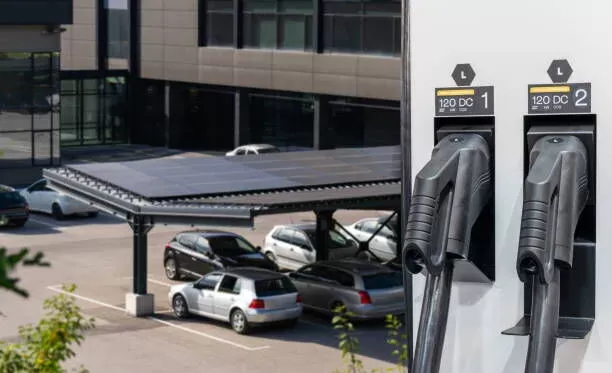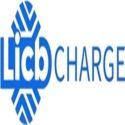Notifications

7 minutes, 26 seconds
-52 Views 0 Comments 0 Likes 0 Reviews

As a Leading EV Charger Manufacturer in China, LiCB Charge Offers Reliable AC and DC Electric Vehicle Charging Stations Alongside Comprehensive Charging Solutions.
As electric vehicles (EVs) continue to transform the global automotive landscape, understanding the different charging modes becomes essential for both new and experienced EV drivers. One of the most common and efficient methods to recharge an EV is Mode 3 charging—the modern standard widely adopted across homes, workplaces, and public charging networks.
Often known as the Type 2 charging cable, Mode 3 charging plays a crucial role in the daily operation of electric vehicles. Whether you’re plugging in at home overnight or topping up at a shopping center, Mode 3 delivers consistent, safe AC charging, supporting the broader transition toward sustainable transportation.
This article explores what Mode 3 charging is, how it works, its advantages over other charging modes, and why it has become the preferred solution across much of Europe and beyond.
Mode 3 charging refers to a system where the EV connects to an AC charging station via a dedicated cable featuring advanced control and safety mechanisms. Unlike Mode 2—which uses portable chargers plugged into household sockets—Mode 3 requires a dedicated charging station (often called a wall box for home use or public charge points in parking lots).
The key characteristic of Mode 3 charging is intelligent communication between the vehicle and charging station. This two-way dialogue enables regulated, optimized energy transfer, ensuring safety, efficiency, and faster charging compared to standard domestic sockets.
Connector Types
Type 1 Connector:
Mostly found in American and some Asian vehicles, this single-phase connector is less common in Europe but used for certain imported models.
Type 2 Connector:
The European standard, supporting both single-phase and three-phase charging. Its ergonomic design includes built-in communication pins that enable safe and smart charging.
Cable Length and Flexibility
Mode 3 charging cables typically range from 5 to 10 meters in length, allowing drivers to park at a comfortable distance from the charging point. Longer cables are especially helpful in tight or awkward parking situations.
Single-phase systems:
Usually deliver between 3.6 kW and 7.2 kW. At this power, a full EV recharge typically takes 6 to 8 hours, ideal for overnight home charging.
Three-phase systems:
Provide faster charging, with power outputs ranging from 11 kW to 22 kW. This allows a full charge in 2 to 3 hours, depending on battery size and vehicle specs, making three-phase Mode 3 chargers well-suited for public and commercial locations where quick turnaround is key.
Mode 3 charging includes an intelligent control protocol involving:
Vehicle communication:
The charger and vehicle perform a handshake to confirm compatibility, battery status, and charging capacity.
Current regulation:
The charger transfers current at an appropriate, controlled power level.
Monitoring and protection:
The system continuously monitors temperature, voltage, and current to prevent overheating or faults.
Termination:
Once the battery reaches the desired charge level, the system automatically stops power flow.
This closed-loop communication guarantees maximum safety, efficiency, and longevity for both the EV and the power supply infrastructure.
| Feature | Mode 2 Charging | Mode 3 Charging |
|---|---|---|
| Design | Portable cable with control box | Dedicated fixed charging station |
| Installation | No permanent installation | Requires wall box or public station |
| Power delivery | 2.3 kW to 3.6 kW (slow) | 3.6 kW to 22 kW (faster) |
| Charging time | 10–12+ hours | 2–8 hours depending on power |
| Safety features | Basic in-cable monitoring | Advanced fault detection and regulation |
| Use case | Occasional/emergency charging | Daily, regular charging |
Mode 3 charging is smarter, safer, and faster, ideal for regular use, while Mode 2 serves as a convenient backup or temporary solution.
Faster Charging Times
Three-phase Mode 3 chargers can deliver up to 22 kW, drastically reducing charging times from overnight to just a few hours.
Enhanced Safety Features
Embedded communication continuously monitors power transfer and shuts down automatically if irregularities occur.
Versatile Compatibility
Supports most modern EVs, especially those in Europe using Type 2 connectors, making it a widely accepted standard.
Suitable for Home and Public Use
Whether in residential garages or commercial charging points, Mode 3 chargers offer adaptable, efficient charging solutions.
Home Charging:
Mode 3 chargers at home provide convenience and cost savings by enabling off-peak charging with superior safety compared to domestic sockets.
Workplace Charging:
Employers increasingly provide Mode 3 stations, allowing employees to charge during work hours for a full battery by day’s end.
Public Charging Stations:
Cities, shopping centers, and parking garages feature Mode 3 chargers up to 22 kW, perfect for quick top-ups during daily errands.
Mode 3 charging continues to evolve, with future enhancements such as:
Dynamic load management: Balancing power use across multiple EVs in shared environments.
Integration with renewables: Solar panels and energy storage to charge EVs using clean energy.
Vehicle-to-grid (V2G): EVs supplying power back to the grid during peak demand.
Government and industry support is driving expanded Mode 3 infrastructure to match growing EV adoption.
As electric mobility goes mainstream, understanding charging infrastructure is critical. Mode 3 charging offers an optimal balance of speed, safety, and convenience. Its standardized connectors, intelligent communication, and compatibility with both home and public installations make it the go-to choice for millions of EV drivers worldwide.
Whether installing a home charger or using public stations, investing in Mode 3 charging ensures a reliable, future-ready charging experience.Know more about Google SEO Directory
China EV Chargers EV Charger Manufacturer EV Charging Solutions

